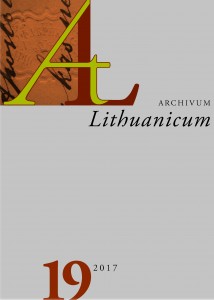LIETUVIŠKI XIX A. PABAIGOS IR XX A. PRADŽIOS ANTKAPIŲ UŽRAŠAI: SANTYKIS SU BENDRINE KALBA
LITHUANIAN EPITAPHS IN THE END OF NINETEENTH AND THE BEGINNING OF THE TWENTIETH CENTURY: RELATION WITH THE STANDARD LANGUAGE
Author(s): Jurgita VenckienėSubject(s): Cultural history, Baltic Languages, 19th Century, Pre-WW I & WW I (1900 -1919), Philology
Published by: Lietuvių Kalbos Institutas
Summary/Abstract: The norms of emerging standard Lithuanian language began to reach inhabitants of countryside and towns at the end of the nineteenth century. Lithuanian epitaphs reveal how the norms of standard Lithuanian spread from the end of the nineteenth into the twentieth century. Even though many epitaph texts did not survive, and even though they are short and anonymous, they reveal the time when people started to recognize the prestige of emerging standard and focus their language on it. It could be assumed that the influence of standard language might have been stronger in areas where clandestine Lithuanian publications were distributed more intensively. According to Vytautas Merkys, they mainly were dispersed throughout the counties adjacent to the state border: Telšiai, Raseiniai, Naumiestis, and Vilkaviškis. This paper analyses the epitaphs from these regions—the Western part of Lowlanders (up to areas around Mažeikiai, Viekšniai, Nerimdaičiai, Varniai, Tytuvėnai, and Raseiniai) and the South West Highlanders (up to areas around Vilkija, Pilviškiai, and Vinkšnupiai). The articles published in periodicals in the end of the nineteenth and the beginning of the twentieth century show that intellectuals considered epitaphs as public language reflecting situation of Lithuanian language. They were not satisfied with epitaphs, written in non-Lithuanian or written inconsistently.
Journal: Archivum Lithuanicum
- Issue Year: 2017
- Issue No: 19
- Page Range: 9-38
- Page Count: 30
- Language: Lithuanian

